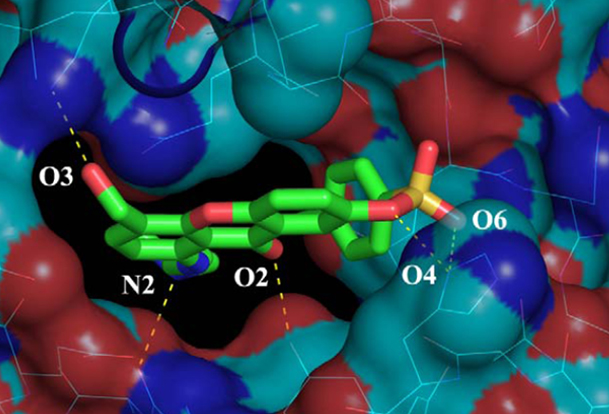
Angiotensin-converting enzyme 2 (ACE2) is a key renin-angiotensin system enzyme involved in balancing the adverse effects of angiotensin II on the cardiovascular system, and its overexpression by gene transfer is beneficial in cardiovascular disease. Therefore, our objectives were 2-fold: to identify compounds that enhance ACE2 activity using a novel conformation-based rational drug discovery strategy and to evaluate whether such compounds reverse hypertension-induced pathophysiologies. We used a unique virtual screening approach. In vitro assays revealed 2 compounds (a xanthenone and resorcinolnaphthalein) that enhanced ACE2 activity in a dose-dependent manner. Acute in vivo administration of the xanthenone resulted in a dose-dependent transient and robust decrease in blood pressure (at 10 mg/kg, spontaneously hypertensive rats decreased 71±9 mm Hg and Wistar-Kyoto rats decreased 21±8 mm Hg; P<0.05). Chronic infusion of the xanthenone (120 µg/day) resulted in a modest decrease in the spontaneously hypertensive rat blood pressure (17 mm Hg; 2-way ANOVA; P<0.05), whereas it had no effect in Wistar-Kyoto rats. Strikingly, the decrease in blood pressure was also associated with improvements in cardiac function and reversal of myocardial, perivascular, and renal fibrosis in the spontaneously hypertensive rats. We conclude that structure-based screening can help identify compounds that activate ACE2, decrease blood pressure, and reverse tissue remodeling. Administration of ACE2 activators may be a valid strategy for antihypertensive therapy.
